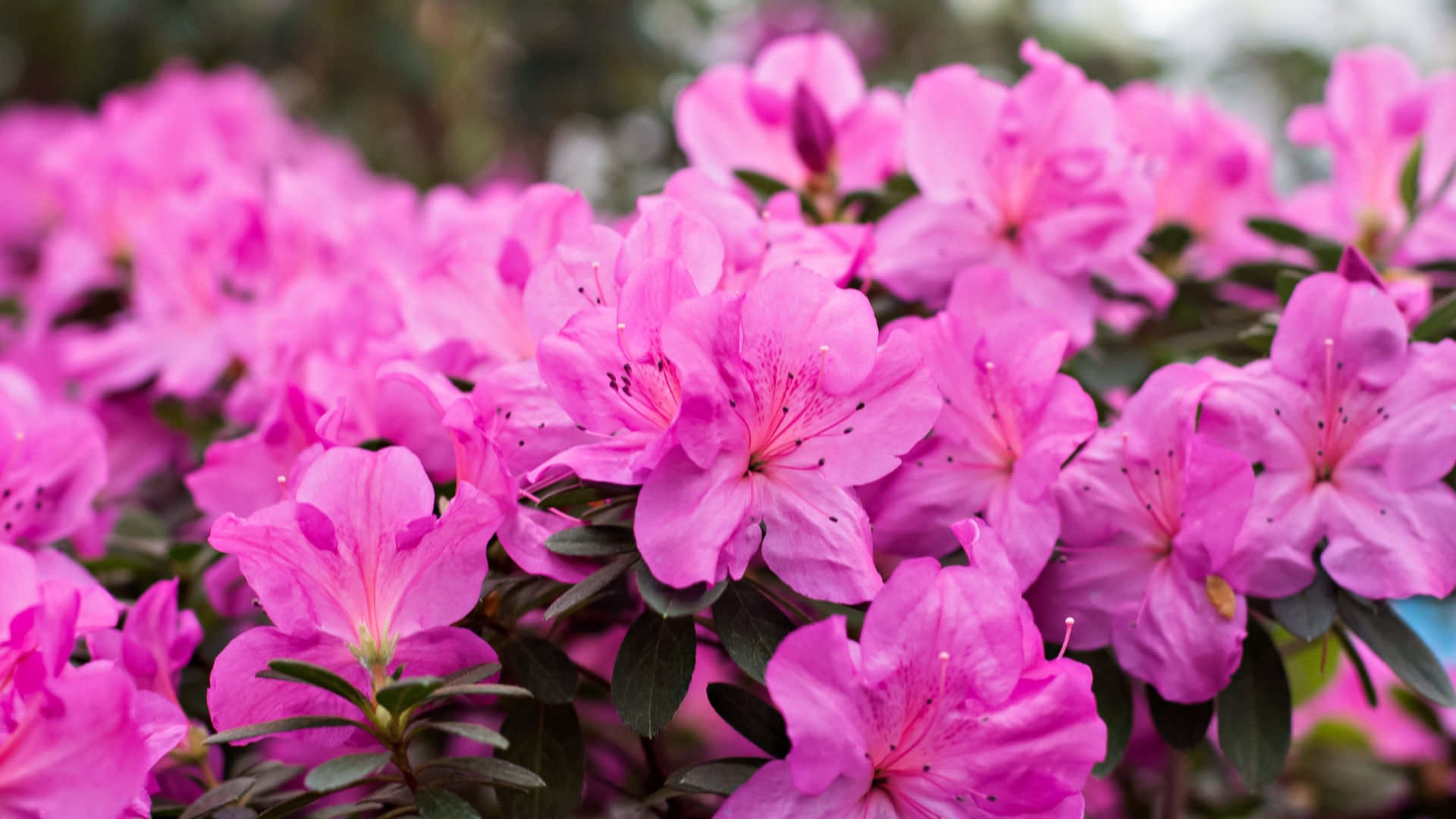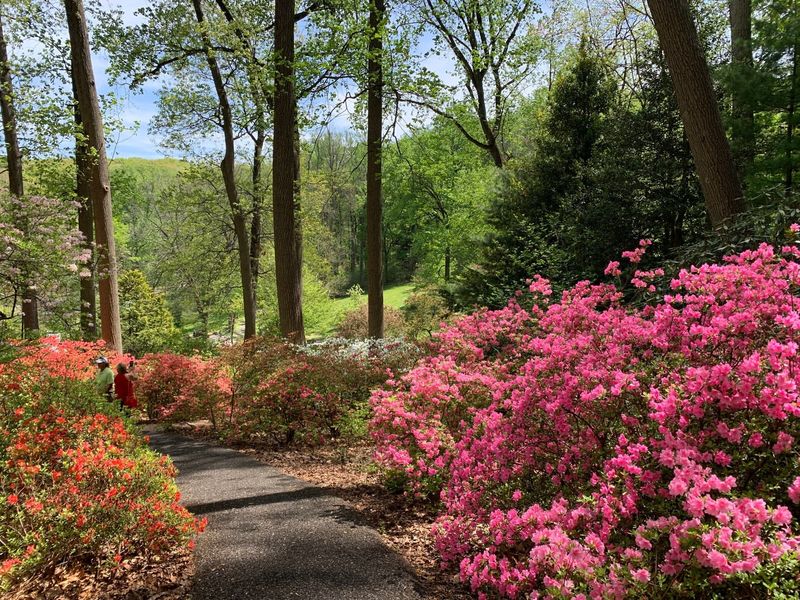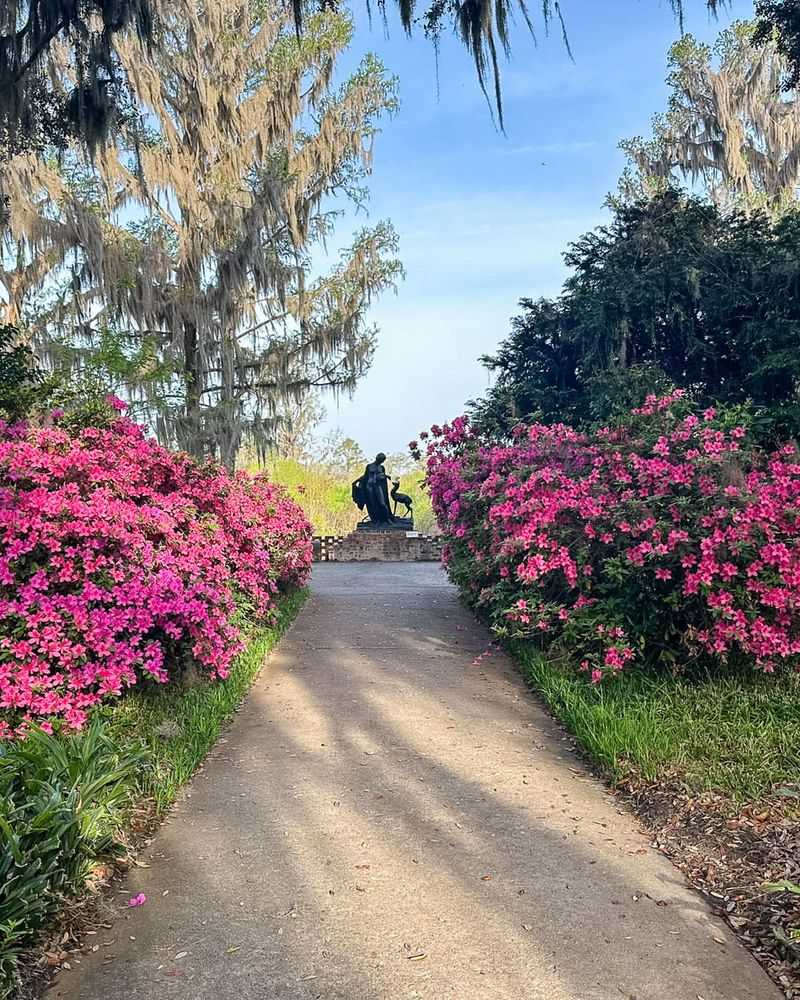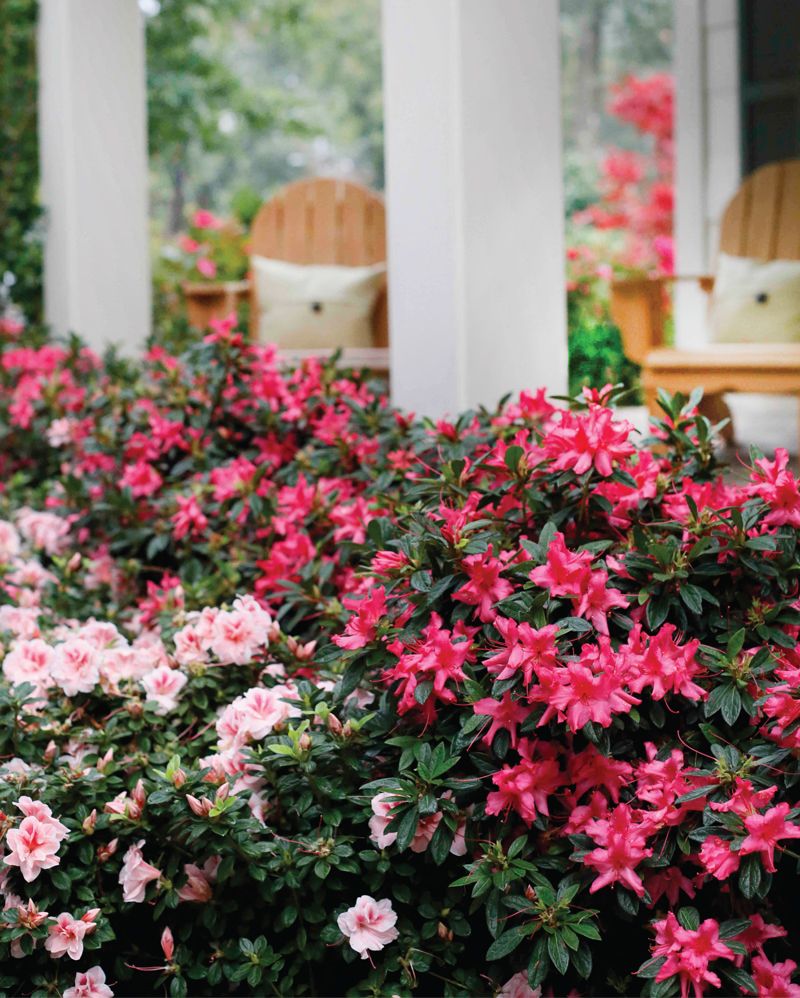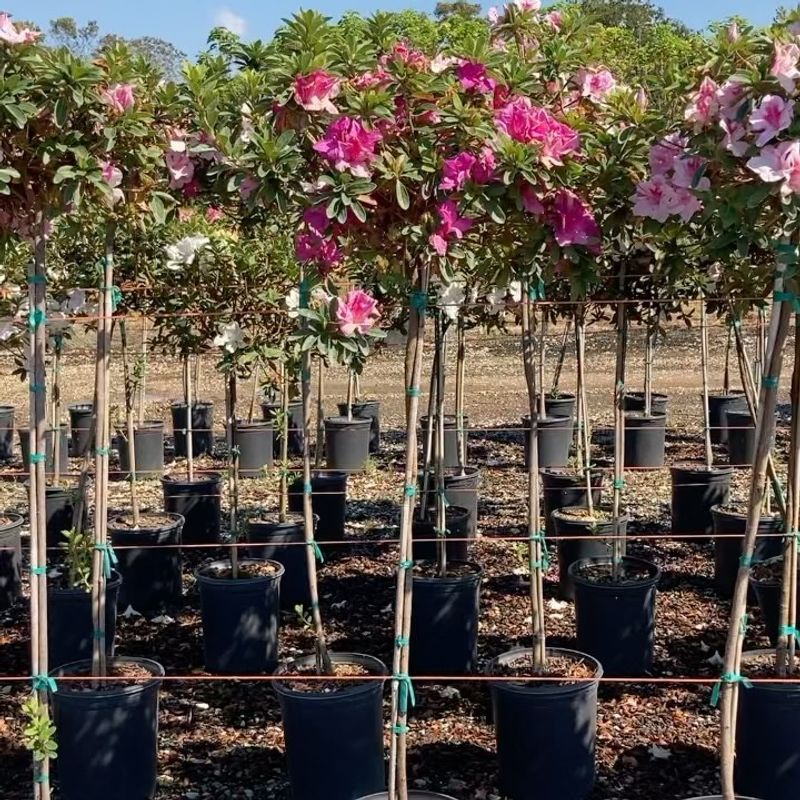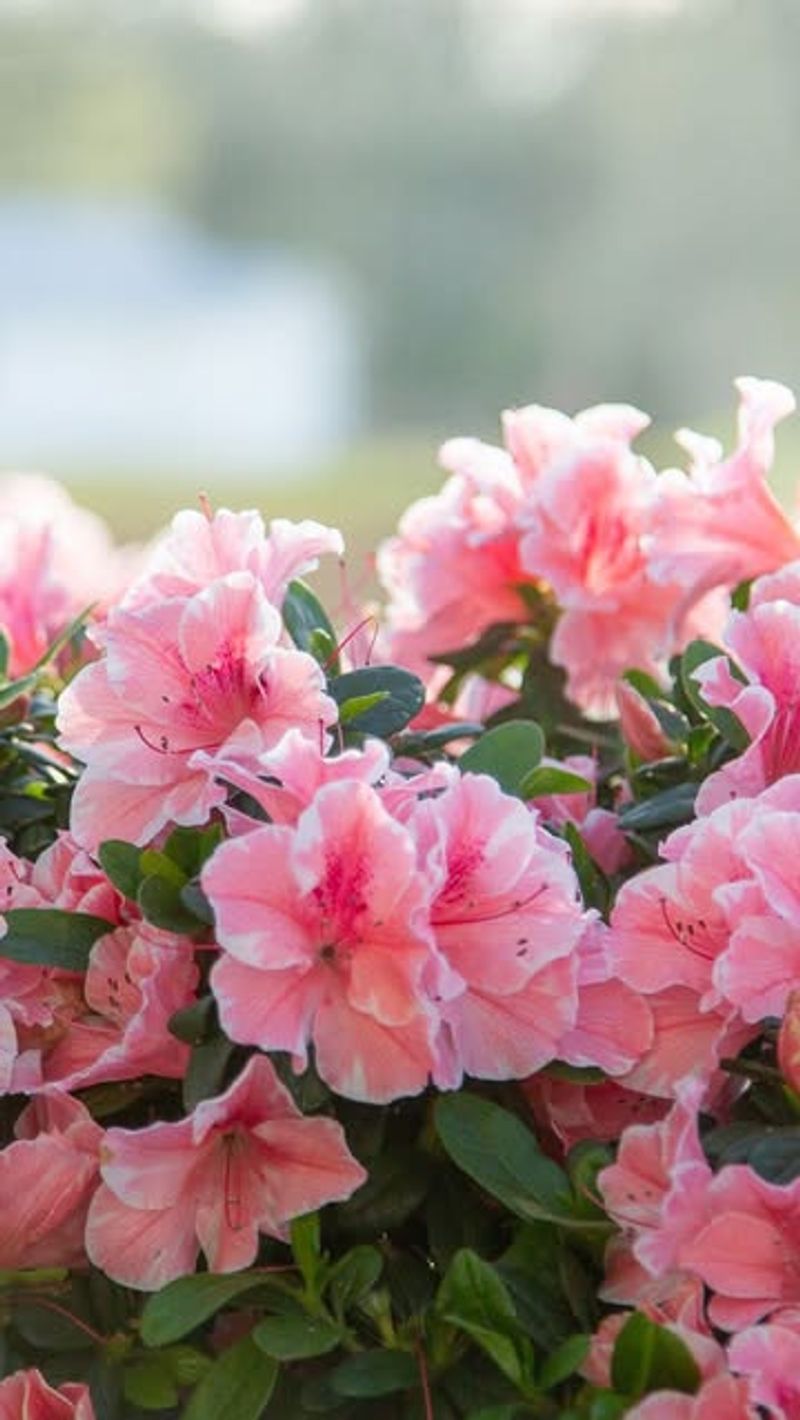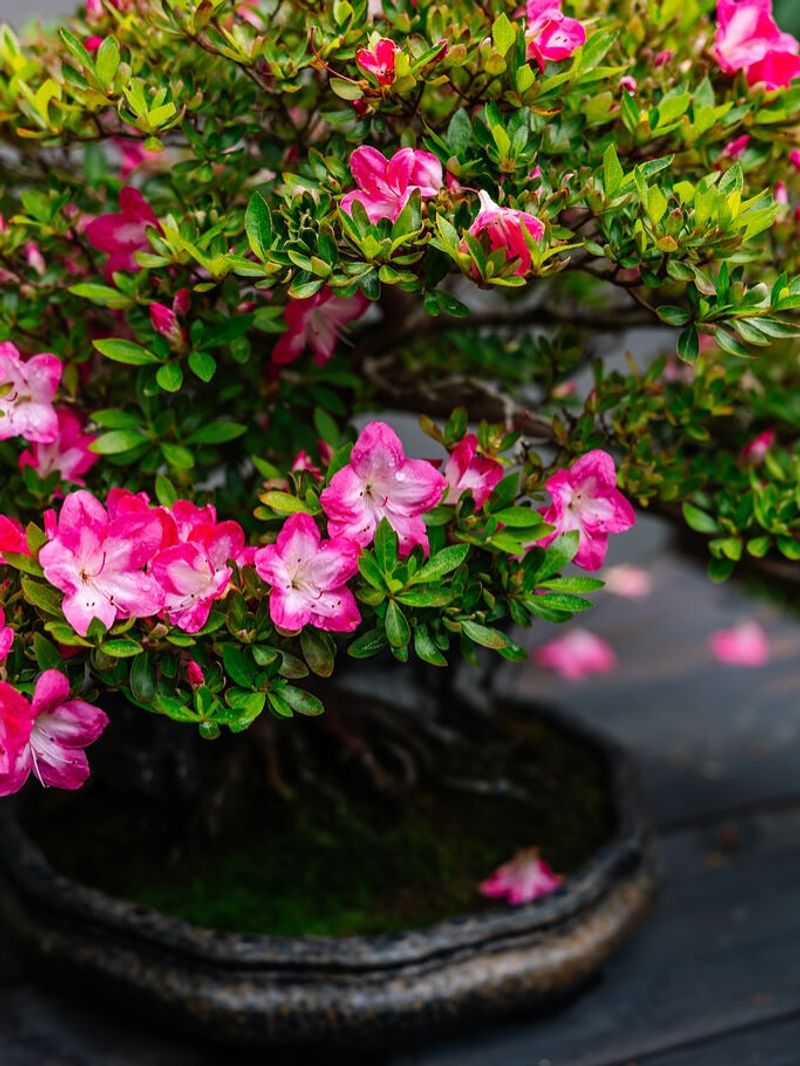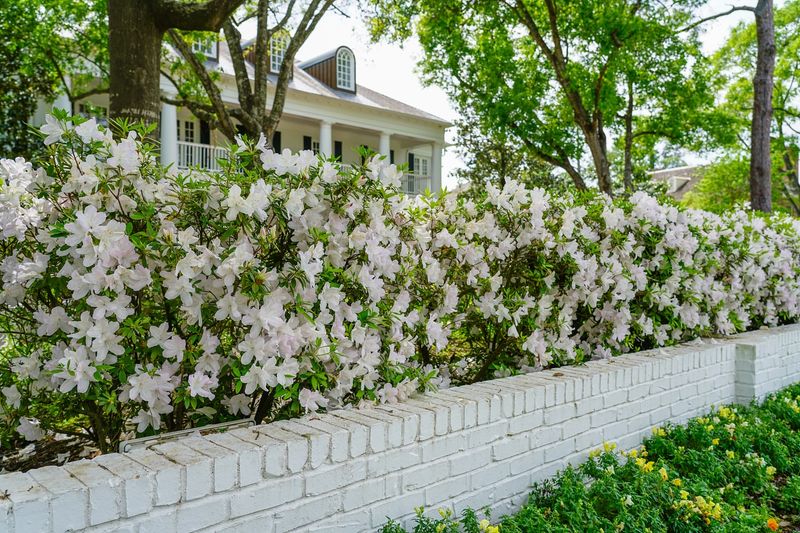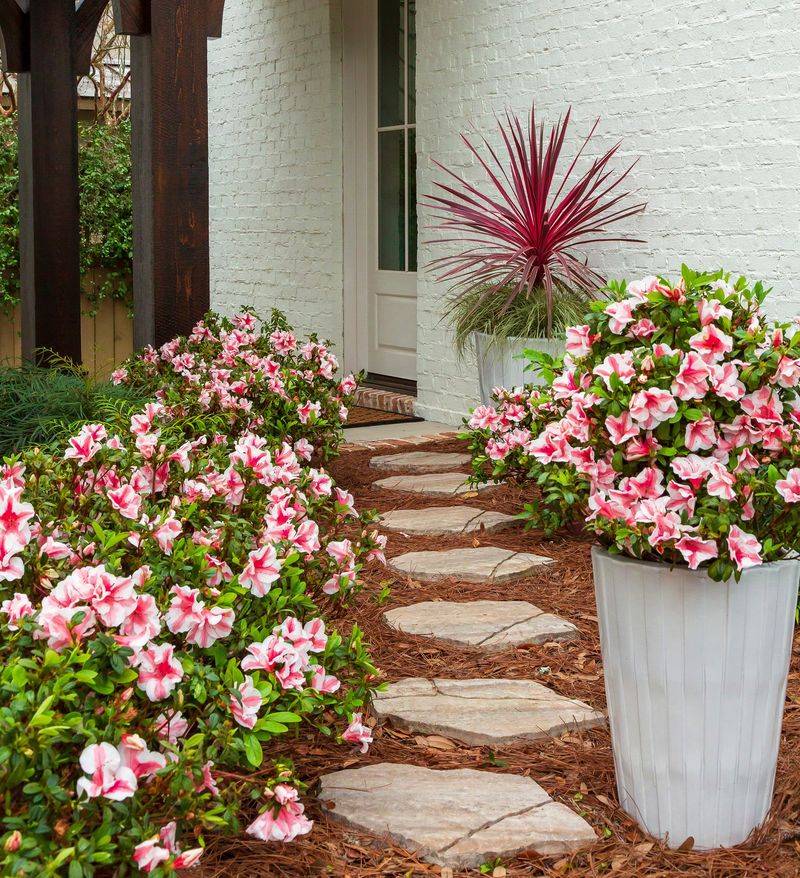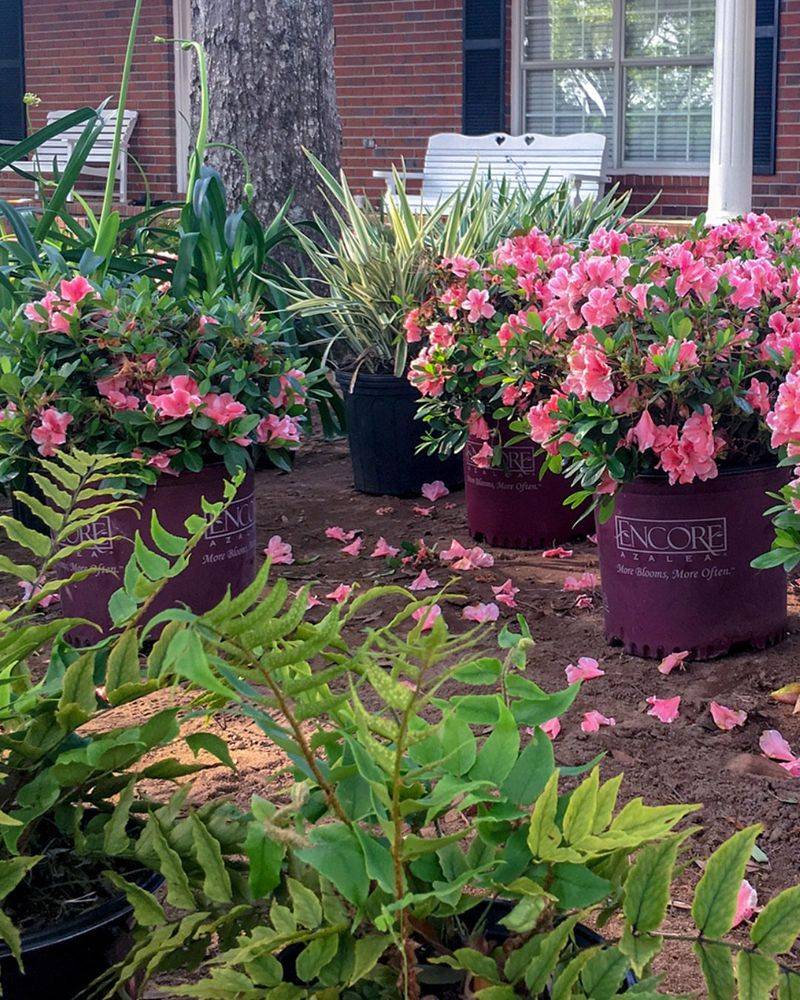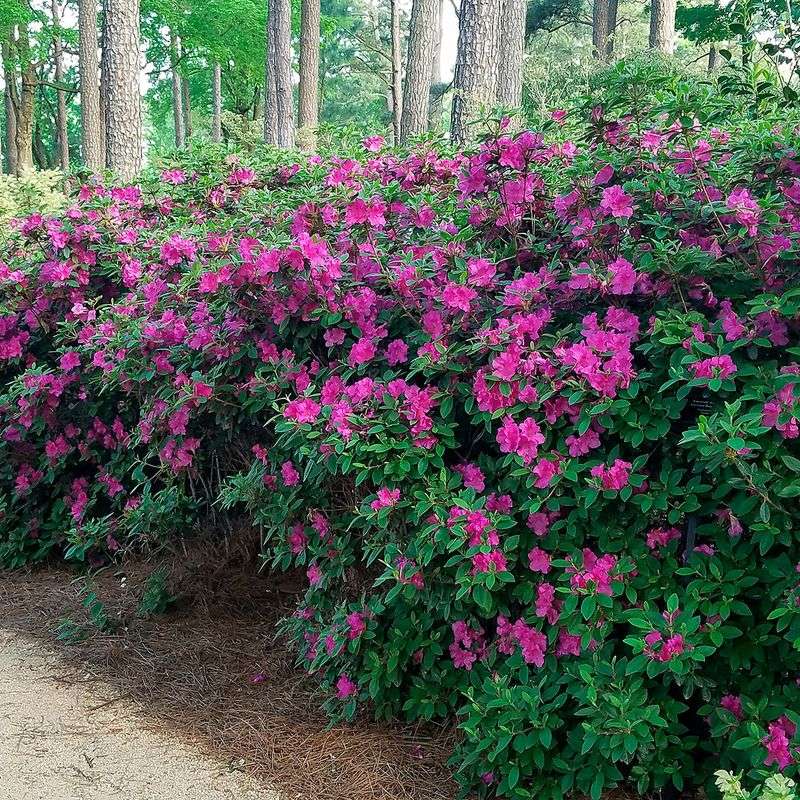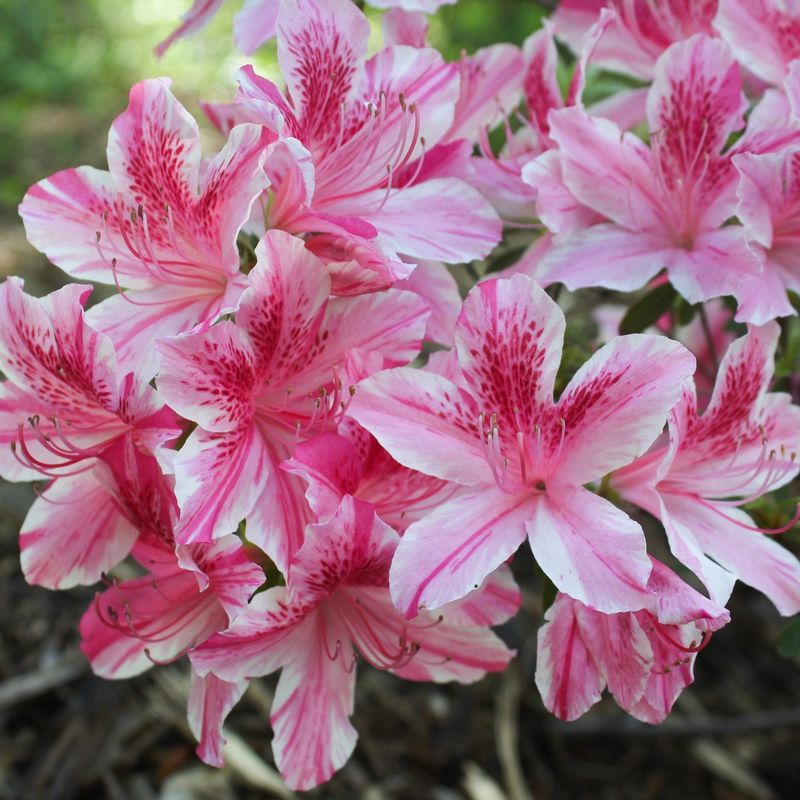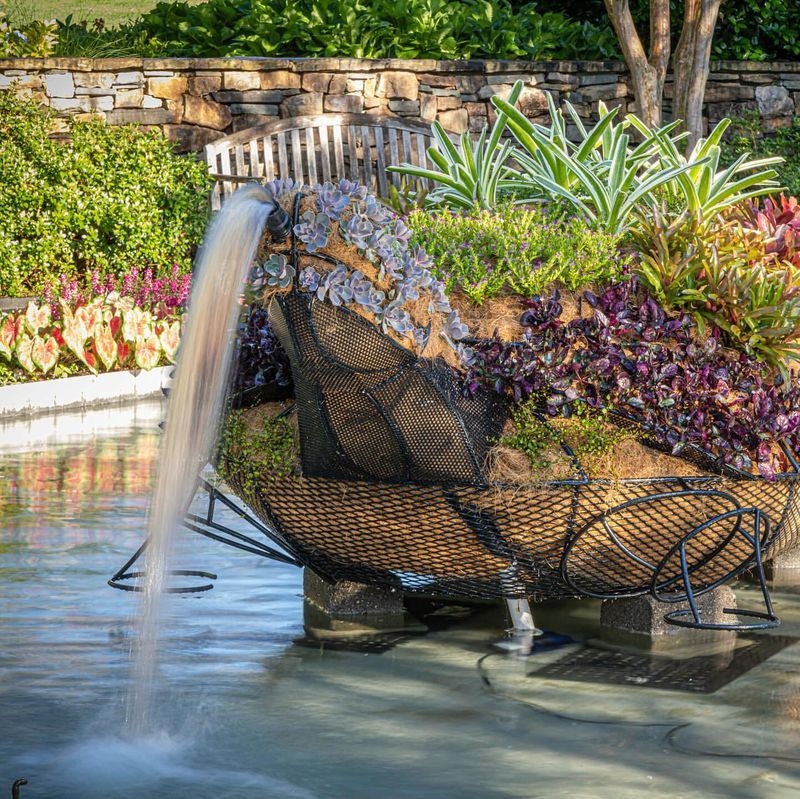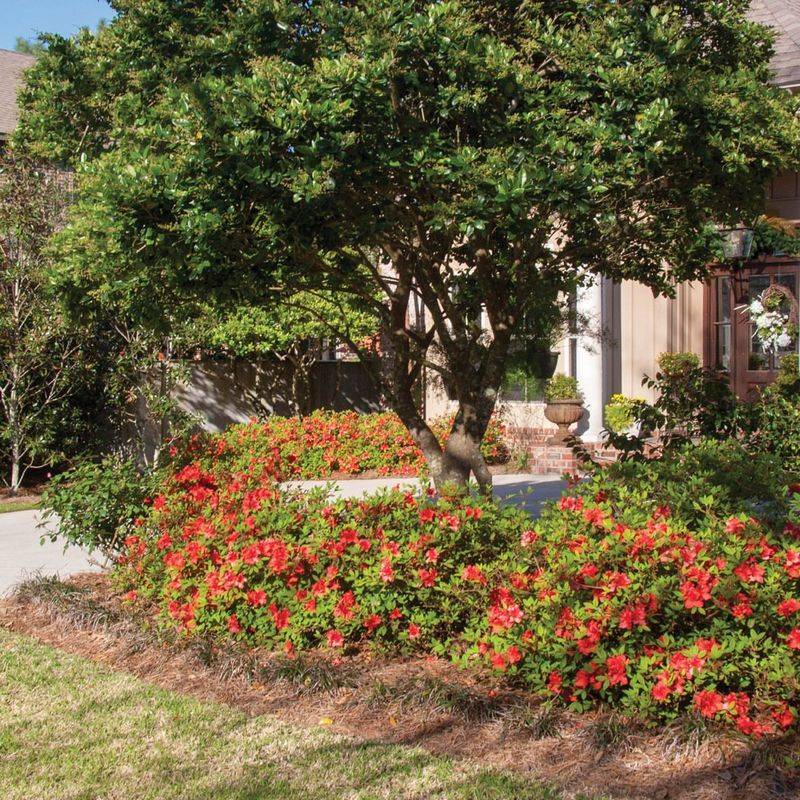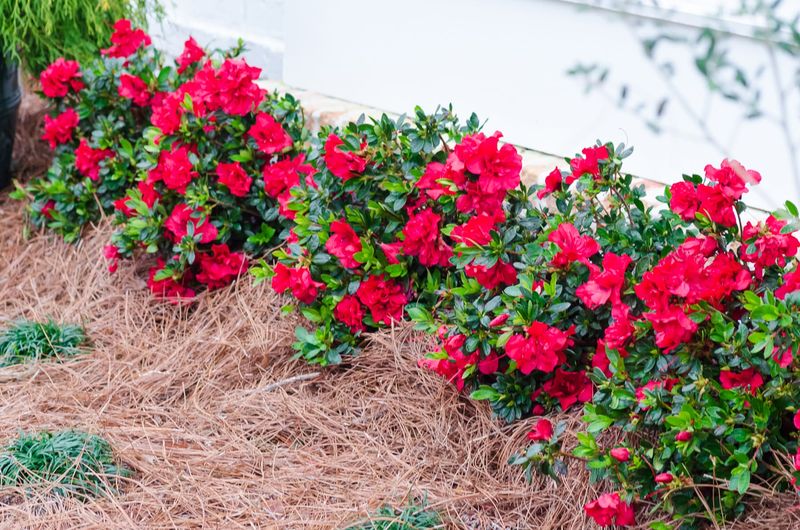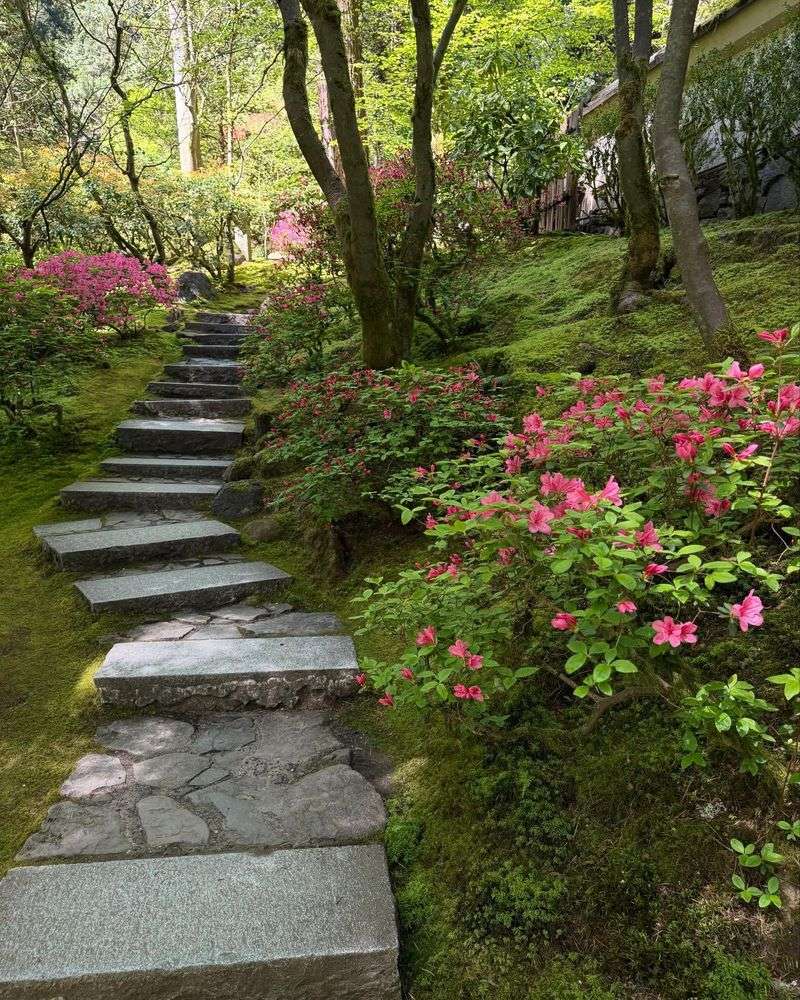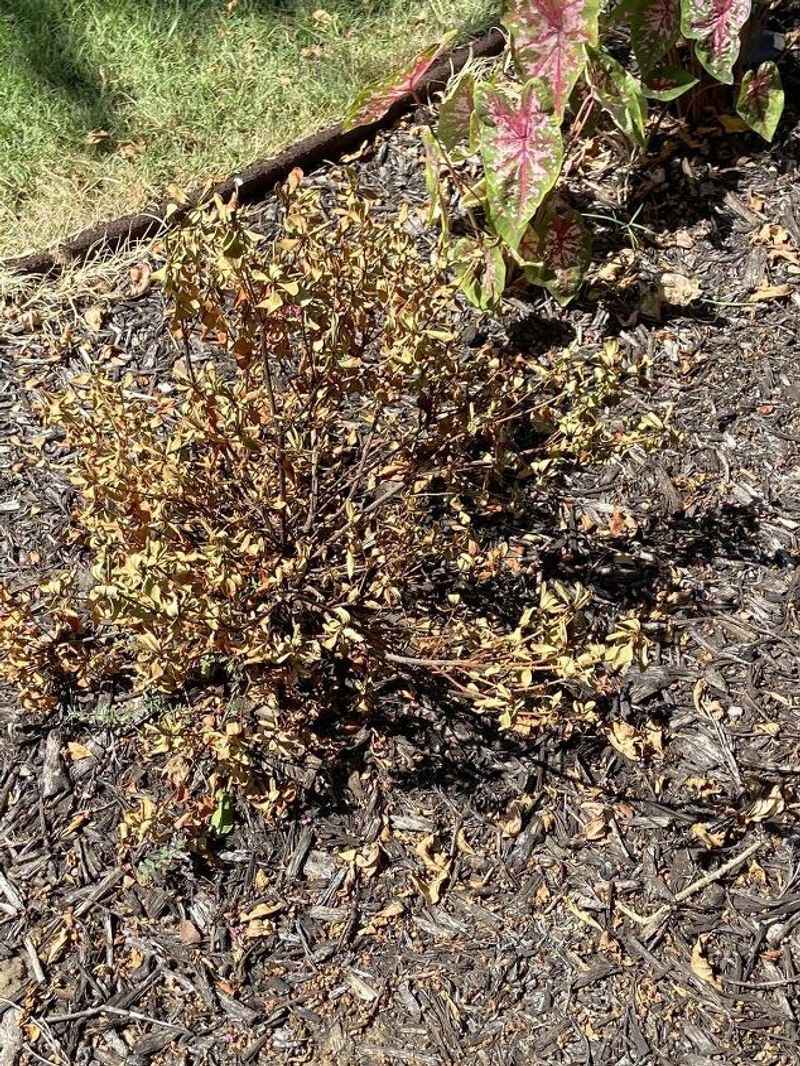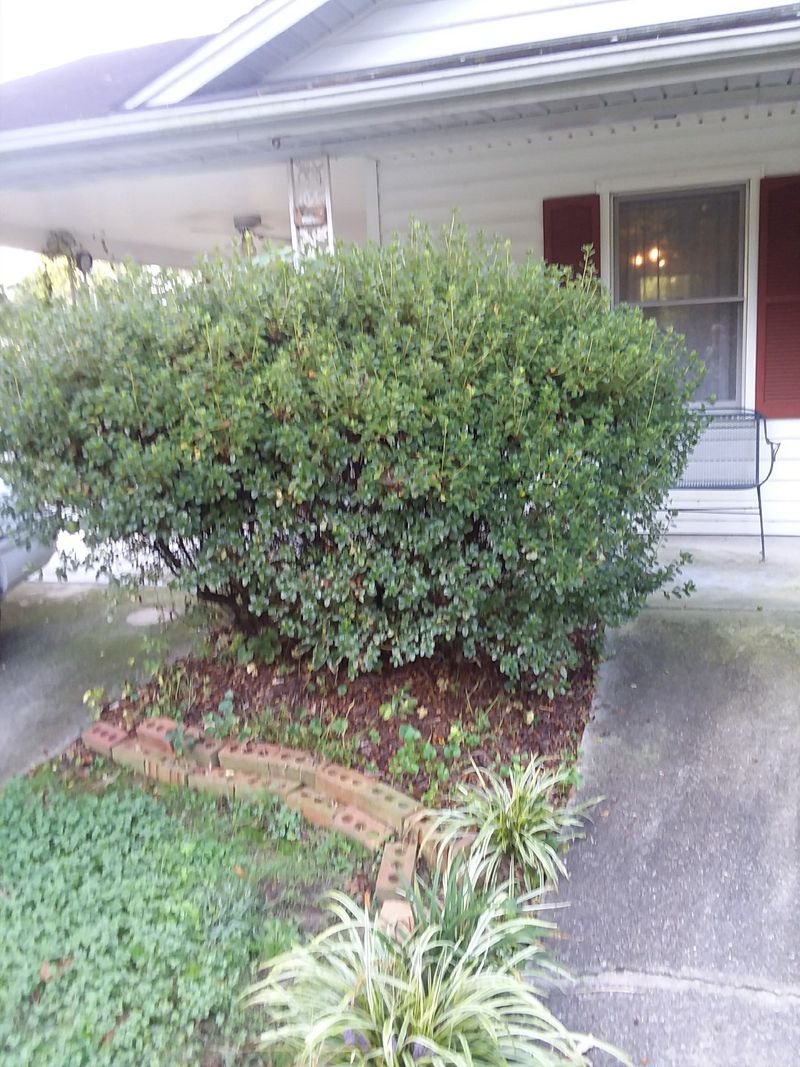Azaleas don’t whisper—they shout in color. These bold bloomers bring instant drama to hedges, borders, and garden beds, but only if you use them right.
From sculptural accents to color-drenched focal points, these 15 creative ideas prove azaleas can do far more than fill space. Just avoid the 3 missteps that turn stunning into forgettable.
1. Create a Woodland Edge Display
Azaleas naturally thrive along forest edges where dappled sunlight filters through tree canopies. Recreate this environment by planting them at the boundary between open lawn and taller trees.
The transition zone provides ideal growing conditions – morning sun with afternoon shade. Add woodland companions like ferns, hostas, and native wildflowers to enhance the natural feel.
Pine needle mulch completes the forest-floor aesthetic while maintaining the acidic soil these beauties crave.
2. Build a Dedicated Azalea Walk
Nothing captivates garden visitors like a pathway flanked by azaleas in full bloom. Design a curving walkway with different varieties planted on both sides, creating a tunnel of color during flowering season.
Varying the heights and bloom times extends the spectacular show from early spring through early summer. Consider adding stone or brick edging to define the path and provide contrast to the lush plantings.
Incorporate bench seating at strategic points to encourage lingering appreciation of your floral masterpiece.
3. Play with Unexpected Color Combinations
Break away from traditional pink and white schemes by experimenting with bold azalea color pairings. Fiery orange varieties planted next to deep purples create dramatic visual tension that draws the eye immediately.
Yellow azaleas pop against blue-flowering companions like forget-me-nots or Virginia bluebells. For sophisticated drama, try monochromatic groupings in graduated shades of the same color family – from pale salmon to deep coral.
Remember that color impact increases with mass plantings, so group at least three of each variety together.
4. Shape into Stunning Topiary Forms
Evergreen azalea varieties can be trained into eye-catching topiary shapes that provide year-round structure. Start with compact, dense-growing cultivars like ‘Hino-crimson’ or ‘Girard’s Rose’ for best results.
Simple geometric forms like spheres, cones, and spirals create formal elegance. More adventurous gardeners might attempt animal shapes or abstract sculptures. Regular trimming is essential – twice yearly after flowering and again in late summer.
Position these living sculptures as focal points near entrances or centered in formal beds for maximum impact.
5. Showcase in Decorative Containers
Container-grown azaleas bring vibrant color to patios, decks, and entryways where garden space might be limited. Choose dwarf varieties like ‘Hershey’s Red’ or ‘Pink Pearl’ that won’t outgrow their homes.
Select containers that complement bloom colors – cobalt blue glazed pots make pink flowers pop, while terra cotta enhances orange and red blooms. Ensure pots have excellent drainage holes and use specialized acidic potting mix formulated for rhododendrons and azaleas.
Group containers of varying heights for a gallery-like display that draws attention.
6. Illuminate with Strategic Lighting
Extend your azaleas’ visual impact into evening hours with thoughtfully placed landscape lighting. Uplighting from below creates dramatic shadows and highlights the plant’s natural branching structure even when not in bloom.
Solar-powered spotlights are easy to install and can be repositioned as plants grow. For flowering season, string lights woven through branches transform azalea beds into magical nighttime features.
Cool white lights enhance blue and purple varieties while warm white bulbs complement red, orange, and pink blooms.
7. Create Stunning Backdrop Hedges
Tall azalea varieties planted in dense rows form spectacular flowering hedges that provide privacy and seasonal color explosions. Choose varieties that reach 6-8 feet like ‘Delaware Valley White’ or ‘Formosa’ for maximum impact.
Plant them 3-4 feet apart to allow mature growth while still creating a solid visual screen. These living walls become especially striking when positioned against dark-colored fencing or home exteriors.
Unlike formal hedges, allow azalea hedges to maintain their naturally graceful form with minimal pruning.
8. Design a Four-Season Azalea Garden
Extend azalea interest beyond spring by combining deciduous and evergreen varieties for year-round appeal. Evergreen types provide winter structure while deciduous varieties offer spectacular fall foliage in burgundy, orange, and gold.
Include reblooming varieties like Encore® azaleas that flower in spring and again in fall. Underplant with early spring bulbs and late-summer perennials to maintain continuous color.
Incorporate decorative mulch, ornamental rocks, and garden art that looks attractive even during dormant periods.
9. Frame Garden Structures with Azaleas
Garden features gain dramatic emphasis when framed by azaleas in bloom. Plant matching varieties on either side of gates, arches, or garden benches to create symmetrical focal points that draw visitors through the landscape.
For pergolas and arbors, consider training climbing varieties like ‘Koromo Shikibu’ to ascend the supports. Garden sheds transform from utilitarian to charming when surrounded by a cottage-style planting of mixed azalea colors.
For architectural homes, formal azalea placements can echo and enhance built elements.
10. Layer Different Heights for Dimension
Create visual depth by arranging azaleas in graduated heights from front to back. Low-growing varieties like ‘Purple Gem’ (2 feet) work beautifully in foreground positions where their details can be appreciated up close.
Mid-sized cultivars like ‘Stewartstonian’ (4 feet) fill the middle ground, while taller varieties such as ‘Delaware Valley White’ (6+ feet) provide the backdrop. This tiered approach maximizes viewing of all blooms simultaneously.
The layered effect is particularly striking on sloped terrain where each plant remains visible from viewing areas.
11. Mix Bloom Times for Extended Display
Stretch your azalea show from early spring through early summer by selecting varieties with different flowering periods. Early bloomers like ‘Delaware Valley White’ and ‘Hino-crimson’ kick off the season in April.
Mid-season varieties such as ‘Girard’s Rose’ and ‘Purple Splendor’ peak in May. Late-blooming types like ‘Sweet Sixteen’ and ‘Weston’s Pink Diamond’ extend the display into June.
Careful placement ensures the later bloomers fill spaces where early varieties have finished, maintaining continuous color throughout the azalea season.
12. Enhance with Water Features
Azaleas paired with water create magical garden moments, as their vibrant reflections double the visual impact. Position them around pond edges where their images mirror in still water, creating a painterly effect straight from Monet’s garden.
For smaller spaces, place container azaleas beside birdbaths or small fountains. The sound of water provides sensory enhancement while the moisture increases humidity that these woodland natives appreciate.
Japanese-inspired gardens particularly benefit from this classic combination of elements.
13. Create Spectacular Mass Plantings
Few garden sights rival a hillside covered in azaleas in full bloom. Large-scale mass plantings create breathtaking impact that can be appreciated from considerable distances. Choose a single variety for modern, monochromatic drama or mix complementary colors for a more cottage-garden feel.
Space plants according to mature width to avoid overcrowding. For immediate impact, place them closer initially, then transplant every few years as they grow.
Gentle slopes not only showcase the plants better but also provide the excellent drainage azaleas require.
14. Pair with Perfect Companion Plants
Strategic companion planting enhances azaleas’ beauty while extending garden interest. Shade-loving perennials like hostas, ferns, and astilbes thrive in the same acidic soil conditions and provide contrasting foliage textures.
Spring-flowering bulbs like daffodils emerge before azalea leaves fully develop, maximizing growing space. For summer interest after blooming ends, place heat-loving annuals like impatiens or coleus in front of azalea shrubs.
Evergreen companions such as boxwood or holly provide structure during winter months when deciduous azaleas are dormant.
15. Incorporate into Japanese-Inspired Gardens
Azaleas have been treasured elements in Japanese gardens for centuries, where they symbolize patience and elegance. Create an authentic Eastern aesthetic by combining them with Japanese maples, moss gardens, and carefully placed stone elements.
Traditional Japanese designs feature azaleas pruned into soft, cloud-like forms rather than rigid shapes. Single-color groupings in white, soft pink, or deep red convey the restraint characteristic of this style.
Add a stone lantern, bamboo water feature, or simple wooden bridge to complete the tranquil scene.
16. MISTAKE: Planting in Full Sun Locations
Many disappointed gardeners place azaleas in bright, open areas where they struggle and fail to thrive. These woodland natives evolved in dappled forest light and suffer in intense afternoon sun exposure, developing scorched leaves and reduced flowering.
The eastern side of buildings provides ideal morning sun with afternoon protection. Under tall trees with high canopies creates another perfect azalea environment. In hot southern regions, even more shade is beneficial.
When full sun can’t be avoided, choose heat-tolerant varieties and provide extra water during summer months.
17. MISTAKE: Incorrect Soil Preparation
Azaleas demand acidic soil conditions that many gardens naturally lack. Planting in alkaline soil leads to yellowing leaves, stunted growth, and eventual plant death as essential nutrients become unavailable to roots.
Test your soil pH before planting – azaleas require 4.5-6.0 for optimal growth. Amend alkaline soils with peat moss, composted pine bark, or commercial soil acidifiers. Avoid using limestone-based materials near azalea beds.
In extremely alkaline areas, consider raised beds filled with specially formulated acidic soil mixes for rhododendrons and azaleas.
18. MISTAKE: Improper Pruning Techniques
Overzealous or poorly timed pruning sabotages azalea flowering. Cutting branches in fall or early spring removes the flower buds that formed during the previous summer, resulting in beautiful foliage but no blooms.
The ideal pruning window is immediately after flowering ends, before new buds set. Remove no more than one-third of growth annually to maintain plant health. Shearing into formal shapes sacrifices the natural grace that makes azaleas special.
For older, overgrown plants, rejuvenation pruning should be done gradually over three years rather than all at once.

